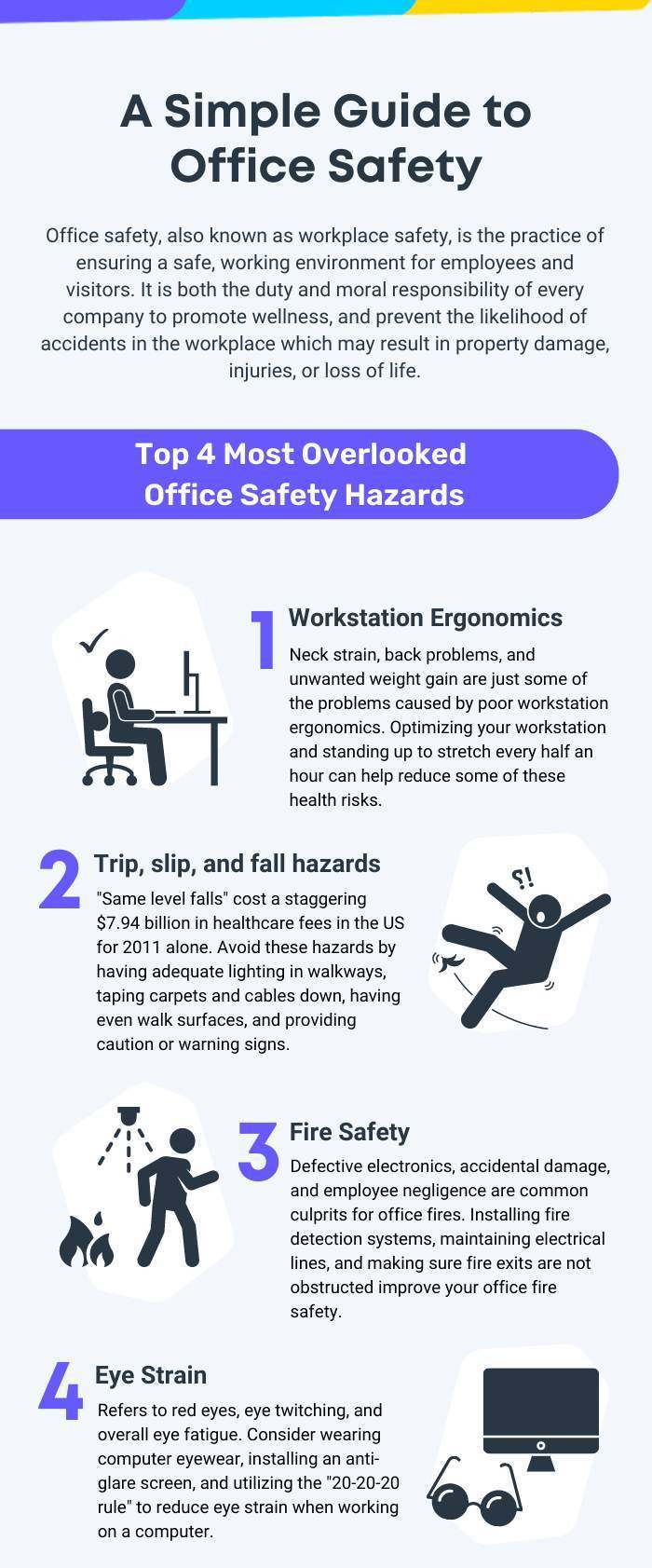A Guide to Safety in the Office is a great way to educate employees and co-workers about safety practices. Any safety program should start with primary goals and focus on achieving them and leading to higher safety achievement levels. For example, if your company is involved in construction, you can use the guide to assess and update your workplace’s safety measures.
The primary source of injuries in the office is falling. However, other forms of property damage include objects and ergonomics. Simple changes to the workspace can prevent many hazards. Other solutions to workplace injuries include administrative interventions such as scheduled walk-throughs and formal reporting systems. Heavy machinery and equipment can pose health and safety hazards. For example, workers must unplug heavy equipment before cleaning or adjusting it. It’s also essential to use a safe toolbox and desk.
While these guidelines help prevent accidents, they’re also essential to encourage employees to report unsafe conditions in the workplace. This way, they’ll feel more empowered to take action. Also, it’s necessary to train employees about new safety best practices and procedures for their jobs since workplace injuries can occur anytime. To help increase employee empowerment, consider using digital safety checklists. These simple tools can guide you through risk assessments and site walkthroughs to ensure office safety.
Check out and learn more from SafetyCulture’s Office Safety Infographic.


Infographic Source: https://safetyculture.com/topics/office-safety/infographic/
 Infographic Portal New Infographics Resource Portal
Infographic Portal New Infographics Resource Portal
